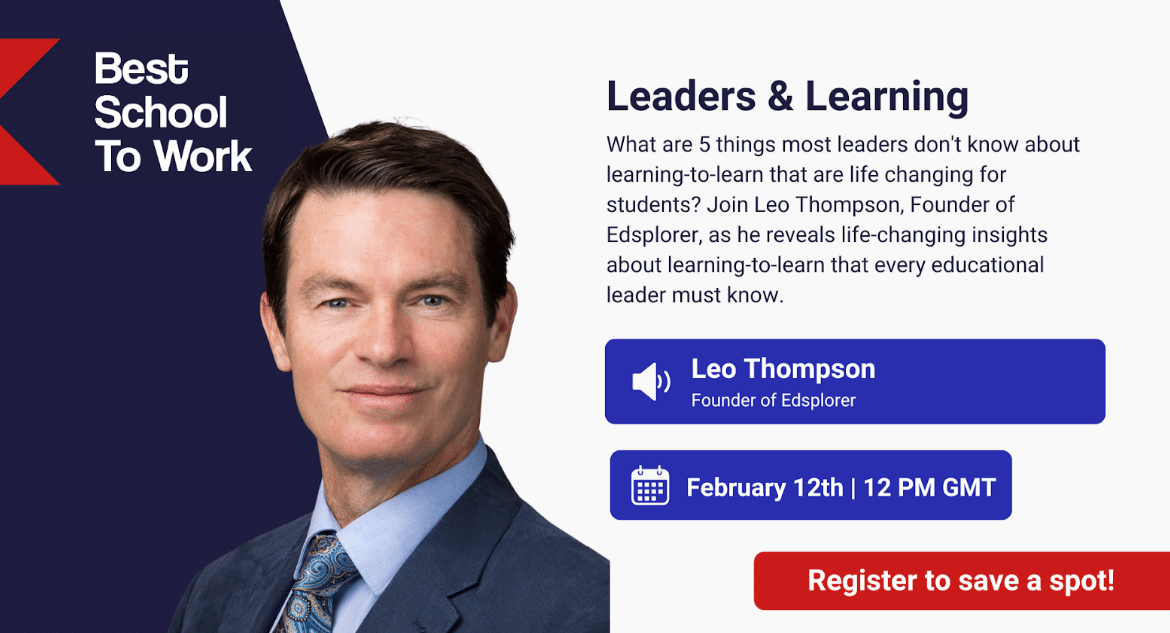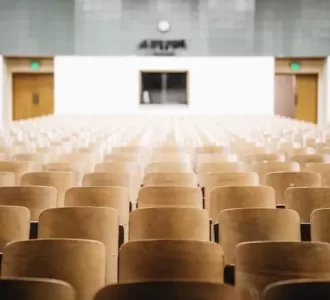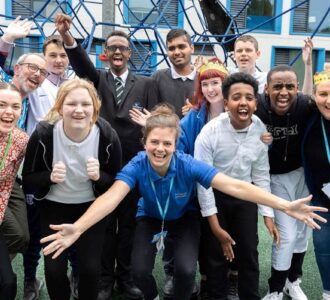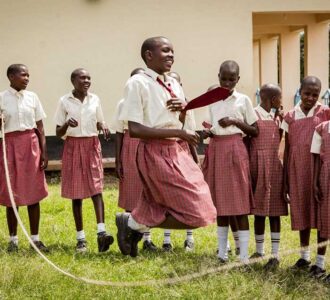How do students learn? And how can we, as educators, empower them to take control of their learning journey? These were the fundamental questions explored in an insightful session led by Leo Thompson, founder of the innovative Edsplorer organisation.
This session delved into life-changing insights about learning to learn concepts that many school leaders are not fully aware of but can improve student outcomes. If school leaders understand cognitive architecture, belief, and memory, they can unlock new ways to stimulate lasting learning in their students. As influential educational psychologist John Sweller stated, “Without an understanding of human cognitive architecture, instruction is blind.”
Understanding how students think and process information allows us to design better learning experiences. For students, understanding their own cognitive architecture helps them learn more effectively and take ownership of their learning.

Breaking some myths
Leo Thompson addressed common misconceptions about cognitive learning that often hinder students’ progress.
- Myth 1: Believing intelligence is fixed from birth= learning
Neuroplasticity is the brain’s ability to adapt and rewire itself, which means that every child has limitless learning potential. Yet, many students and educators still hold onto outdated beliefs that intelligence is predetermined.
For years, traditional education systems have unintentionally reinforced the idea that some students are naturally “gifted” while others struggle. But modern neuroscience tells a different story. The brain is constantly changing, strengthening connections with practice and effort. This means that all students, regardless of background or perceived ability, can improve their cognitive skills and academic performance.
- Myth 2: Believing studying & reading = learning
Simply reading textbooks or reviewing notes does not equate to true learning. Instead, active learning strategies—such as retrieval practice, spaced repetition, and elaboration—are far more effective in reinforcing knowledge.
- Myth 3: Believing mistakes and errors mean you are not intelligent
Mistakes are a vital part of the learning process, particularly when paired with metacognition (thinking about one’s thinking). Understanding why errors happen and how to improve encourages deeper learning. As Michael Jordan famously said, “I’ve missed more than 9,000 shots in my career. I’ve lost almost 300 games. Twenty-six times, I’ve been trusted to take the game-winning shot and missed. I’ve failed over and over and over again in my life. And that is why I succeed.”
How can we build belief in every child?
A child’s self-belief plays an important role in their learning journey. Their environment, teachers, and personal mindset all shape what they think they’re capable of achieving. If a student believes they “just aren’t good at maths” or “can’t write well,” those beliefs can become self-fulfilling prophecies. Buddha’s wisdom, “The mind is everything, what you think, you become”, reminds us how powerful these beliefs are.
Teachers play a crucial role in shifting these mindsets. If educators promote a growth mindset in the classroom, where mistakes are seen as opportunities to learn rather than failures, they can help students develop resilience, confidence, and motivation.
There are two golden rules to help students believe in themselves:
- Mindset drives our growth and success in school and life.
- Every student must identify as a learner and believe in their potential.
As educators, we have an important impact on children. Teachers with high expectations can help students achieve remarkable things. Many of us can recall a teacher who uplifted and inspired us and unfortunately, other who discouraged us. This phenomenon is known as the Pygmalion Effect: high expectations lead to improved performance, while low expectations can limit a student’s growth.
Four key ways to help students build self-belief:
- Believe in them: encourage and motivate students consistently.
- Share high expectations: let students know you believe they can succeed.
- Provide guidance: teach strategies for learning, not just content.
- Focus on strategy: equip students with tools to overcome challenges.
How students can maximise their learning power
Leo Thompson explained that learning happens when three key elements work together: memory, processing power, and self-regulation. Memory is the ability to store and retrieve information over time, processing power determines how quickly and effectively students can make sense of new information, and self-regulation allows them to stay motivated, focused, and engaged in the learning process. When students develop these areas, they not only improve academically but also build skills that will benefit them throughout life.
The brain does not store information in isolation but rather by forming connections between new knowledge and existing experiences. Students retain information more effectively when they see it as relevant, engaging, and linked to what they already know. For teachers, this reinforces the importance of making learning meaningful—using real-world examples, storytelling, and interdisciplinary connections can help embed information into long-term memory.
Equally important is empowering students to take control of their own learning. They need to understand that intelligence and ability are not fixed but grow with effort and the right strategies. A strong mindset and perseverance can shape success just as much as natural talent. At the same time, teachers must recognise the profound impact they have on their students. Instilling self-belief and a positive learning mindset can be life-changing. By making learning-to-learn a fundamental part of daily teaching, educators can not only enhance academic performance but also equip students with the confidence and resilience to tackle challenges far beyond the classroom.
Practical strategies for teachers
Beyond understanding the theory, educators need actionable strategies to help students harness these insights. Here are some evidence-based techniques shared in the session:
- Spaced practice: short and frequent reviews at scheduled intervals.
- Retrieval practice: low-stakes quizzing, gamified recall, and self-testing.
- Interleaving: mix concepts, problem types, topics, drills, question types.
- Elaboration: encouraging students to explain and expand on their understanding.
- Concrete examples: real-life scenarios, case studies, simulations.
- Dual coding: infographics, annotated images, mindmap connections.
- Feedback: providing clear, constructive steps for improvement.
The key message
Ultimately, learning-to-learn is the most powerful skill a student can acquire. By understanding how their brain works, developing a growth mindset, and applying effective strategies, students can unlock their full potential. And as educators, our role is not just to teach content but to empower students with the mindset and tools to become lifelong learners.
Just as we strive to create the best learning environment for students, it’s equally important to cultivate a thriving workplace for educators. A positive school culture not only enhances staff wellbeing but also plays a crucial role in recruitment and retention. The Best School to Work programme helps schools build and sustain an outstanding workplace culture while recognising those who excel. To learn more about how we can support your school, visit Best School to Work or book a demo today.
Resources for further learning
For those looking to dive deeper into the science of learning, here are some highly recommended books and academic papers:
Books:
- The Science of Learning: 99 Studies That Every Teacher Needs to Know – Edward Watson & Bradley Busch
- How We Learn: The New Science of Education and the Brain – Stanislas Dehaene
- Uncommon Sense Teaching: Practical Insights in Brain Science to Help Students Learn – Barbara Oakley, Beth Rogowsky & Terrence J. Sejnowski
- The Metacognition Handbook: A Practical Guide for Teachers and School Leaders – Jennifer Webb
- Make It Stick: The Science of Successful Learning – Peter C. Brown, Henry L. Roediger & Mark A. McDaniel
- Teaching Students to Drive Their Brains – Donna Wilson & Marcus Conyers
- Teach Students How to Learn – Saundra Yancy McGuire with Stephanie McGuire
- Ultralearning: Accelerate Your Career, Master Hard Skills and Outsmart the Competition – Scott H. Young
- Now It All Makes Sense – Alex Partridge
- The Inclusive Classroom: A New Approach to Differentiation – Daniel Sobel & Sara Alston
Academic papers:
- Innovations with Schema Theory: Modern Implications for Learning, Memory and Academic Achievement – Rusen Meylani
- Why Does the Brain Matter for Education? – M.S.C. Thomas & Y. Arslan



